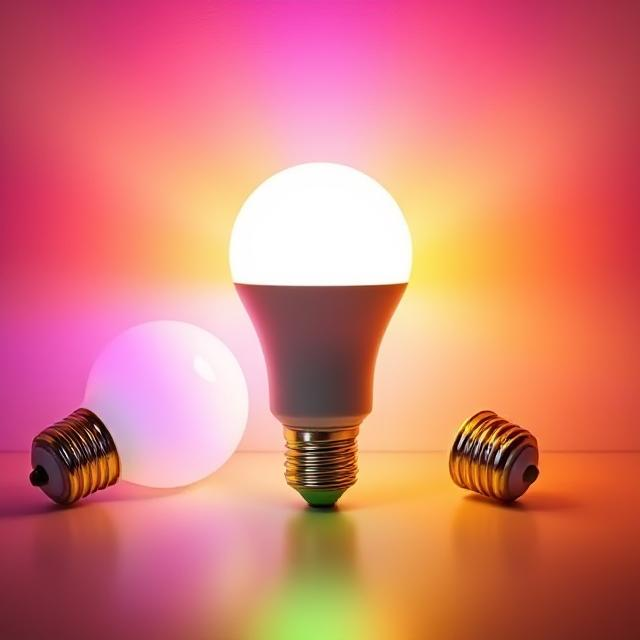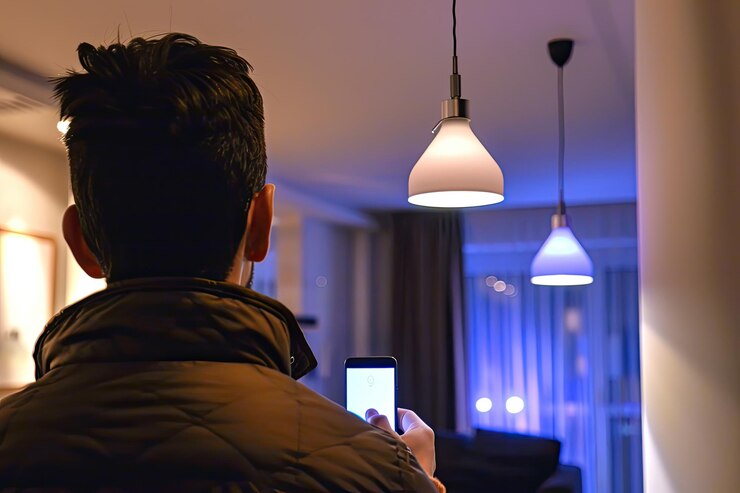Smart light brands

Here are 8 top smart home light brands each suited to different preferences
Overview One of the most trusted and well-known smart lighting brands, offering a wide range of bulbs, light strips, and accessories.
Features Full color spectrum bulbs, dimmable white options, and customizable lighting scenes. Works with Alexa, Google Assistant, and Apple HomeKit.
Hub Requirement Most Philips Hue products require the Philips Hue Bridge for full functionality, but newer Bluetooth-enabled bulbs can work without a hub for basic control.
Why Trusted Known for reliability, extensive ecosystem, and high-quality lighting.
Overview Sengled offers affordable smart lighting solutions that are easy to set up and integrate directly with Alexa.
Features Smart bulbs with dimming and color options, motion-sensor outdoor lighting, and light strips. Some models connect via Wi-Fi, while others use Zigbee, with an Echo device or Sengled hub.
Hub Requirement Zigbee based models may require a hub, but many Sengled lights work directly with Alexa without a hub.
Why Trusted Affordable and known for good performance in the budget category.
Overview Kasa Smart is a popular brand from TP Link that produces smart lights, smart plugs, and other smart home devices.
Features Offers dimmable, white, and multicolor bulbs that can be controlled via the Kasa Smart app or Alexa. Scheduling and remote control features are included.
Hub Requirement No hub required; these bulbs connect directly to your Wi-Fi network.
Why Trusted Well-regarded for ease of use and reliability with great app control and Alexa integration.
Overview LIFX is known for producing high-quality, premium smart lights with excellent brightness and color options.
Features Extremely bright bulbs, full RGB color spectrum, tunable white lights, and light strips. Excellent app control with advanced color and scheduling options.
Hub Requirement No hub required; connects directly to Wi-Fi and works with Alexa, Google Assistant, and Apple HomeKit.
Why Trusted Known for vibrant colors, brightness, and a strong track record in the premium smart light market.
Overview Wyze offers budget-friendly smart bulbs that are easy to use and integrate well with Amazon Alexa.
Features Dimmable white and tunable color bulbs, app control, scheduling, and voice control via Alexa.
Hub Requirement No hub required; connects via Wi-Fi.
Why Trusted Affordable yet reliable, with a strong reputation for offering quality smart home products at lower prices.
Overview Nanoleaf is known for its unique, customizable smart light panels and shapes that double as decor.
Features Light panels that can be arranged in various designs, color-changing capabilities, music sync, and smart scenes, it also works with Alexa, Google Assistant, and Apple HomeKit.
Hub Requirement No hub required; connects via Wi-Fi.
Why Trusted this is a high-quality lighting solutions that provide both functionality and aesthetic appeal.
Overview GE Lighting’s smart lights under the Cync brand, formerly C by GE, offer affordable and reliable smart lighting products.
Features Full-color and tunable white options, dimming, scheduling, and voice control with Alexa.
Hub Requirement No hub required; connects via Bluetooth or Wi-Fi, depending on the model.
Why Trusted GE is a trusted brand in lighting, and its smart lighting products offer solid performance at a reasonable price.
Overview Govee specializes in affordable, colorful smart lighting options, including bulbs, light strips, and LED panels.
Features Multicolor bulbs, dimmable lights, RGBIC light strips, and advanced effects like music sync. Compatible with Alexa and Google Assistant.
Hub Requirement No hub required; connects via Wi-Fi.
Why Trusted Known for affordability, vibrant color options, and a wide range of products, including decorative lighting solutions.
Check Out Our Top Smart Light!
All you need and more for any lighting space
Overall, Philips Hue is the best smart home light if you want a highly flexible, expandable, and feature-rich lighting system,
Brightness and Color, LIFX is the best Ideal if you want bright lights without needing a hub,
Budget, Wyze Bulb is best – For users seeking affordable smart lighting without sacrificing functionality,
and for Creativity, Nanoleaf Shapes is best If you are looking for a decorative and interactive lighting solution.
Let’s create a home that works for you

Step by step guide
Let us follow along
1. Assess your home for the best lighting you need
Think about how you use lighting in your home.
- Room, Identify which areas need smart lighting.
Example, For your
Living room a dimmable and color-changing light for movie nights or reading would be perfect
Bedroom you may need a gradual lighting to wake you up
Kitchen a bright light for cooking and warm lighting for dining would be lovely
Bathroom and Hallways a motion-activated light for nighttime convenience would be awesome
- Energy Efficiency, Use smart lights to automate turning off lights in empty rooms to save energy.
2. Choose the right smart lighting system
Smart Bulbs Replace your regular light bulbs with smart ones. They offer dimming, color-changing, and scheduling features. Top options include Philips Hue, LIFX, and Wyze.
Smart Light Switches Install a smart switch if you want to control existing lights without changing all the bulbs. Systems like Lutron Caseta are ideal for this.
Smart Light Strips are great for accent lighting under cabinets, behind TVs, or along stairs. Brands like Govee and Philips Hue offer customizable strips.
Smart Lamps Add portable smart lamps for your desks, bedside tables, or living rooms.
Use Motion Sensor in areas like hallways or closets for automatic on/off control.
3. Choose a smart home platform
Amazon Alexa which is a voice control and routines using Alexa-enabled devices.
Google Assistant, an integration with Google Home for voice control and automation.
Apple HomeKit, a seamless integration for Apple users via iPhone, iPad, and Siri.
Dedicated Apps – Many systems come with their own apps e.g., Philips Hue, LIFX that allows you to control, schedule, and customize your lights.
4. Set up automation and routines
Set routines based on your daily schedule, such as
Gradual brightening in the morning to simulate sunrise.
Dimming lights at night for a relaxed evening.
Turning lights off automatically when you leave home.
Timers – set specific times for lights to turn on or off, especially when you’re away.
Sunset/Sunrise Triggers – automatically adjust lights based on the time of day.
Motion-Activated Lighting – use sensors to trigger lights in hallways, bathrooms, or entrances when motion is detected.
5. Control your smart lights with voice commands
With smart assistants integrated, you can control your lights with your voice
“Alexa, turn off the kitchen lights” or “Hey Google, dim the living room lights to 50%.”
Set the mood with commands like “Hey Siri, set the bedroom lights to soft white” or “Alexa, turn the lights to party mode” for colored lights.
Useful for when your hands are full or you’re not near a switch.
6. Create lighting scenes for various activities
Customize lighting scenes for different moods or activities
Relaxing Mode Soft, warm lighting for unwinding in the evening.
Work Mode Bright white lights to boost productivity.
Movie Night Dimmed or colored lighting for a cozy movie-watching atmosphere.
Dinner Party Set a warm ambiance with soft lights to enhance social gatherings.
Store these scenes in your app or activate them with voice commands.
7.Sync lights with other smart home devices
Smart Thermostats – Sync lights with your thermostat to create a cozy atmosphere (dimmed lights and warmer temperatures for bedtime).
Smart Security Systems – Connect lights with security cameras or doorbells. For example, porch lights can turn on when the doorbell rings or motion is detected.
Music or TV – Some systems, like Nanoleaf, can sync your lights to pulse with your music or change colors based on what’s happening on your TV.
8.Remote control and monitoring
Use the app to control your lights when you’re away from home. This can be useful for security or ensuring you didn’t leave any lights on.
Some apps allow you to monitor energy usage, helping you optimize electricity consumption.
9.Group your smart lights into zones
allowing you to control them by room or activity –
Living Room Zone – Control all living room lights with a single command.
Outdoor Zone – Turn all outdoor lights on or off together.
Sleep Zone – Create a bedtime routine where bedroom lights dim gradually and eventually turn off.
You don’t have to outfit your entire home with smart lights at once, you can start small and expand your system over time.
Begin with key rooms such as your bedroom, kitchen, living room, and then add more lights or smart switches as you go,
Gradually introduce advanced features like motion sensors, voice control, or integration with security systems.
Smart lights can help reduce electricity use with there amazing features.
Here are three ways smart home lights reduce electricity
1. By dimming which lower brightness levels to save energy when full brightness isn’t needed.
2. With motion sensors that automatically turn lights off in unoccupied rooms.
3. You can scheduled lights to ensure lights turn off at night or when you leave the house.
Your lighting should adapt to your lifestyle, so take advantage of the customization options smart lighting offers, you can experiment with different colors, brightness levels, and automations to find the perfect setup.
